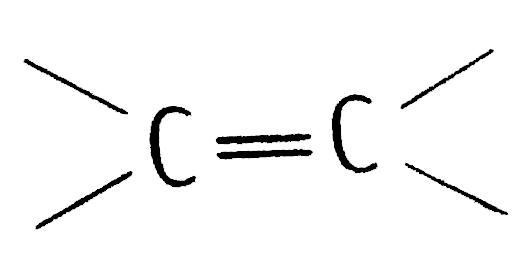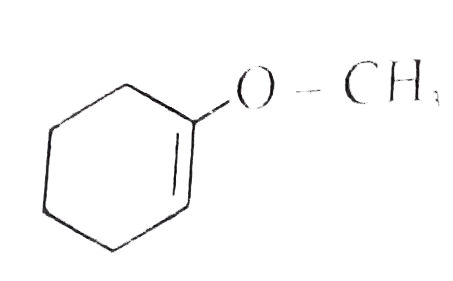Electrophilic addition reactions proceed in two steps. The first step involves the addition of an electrophile. Name the type of intermediate formed in the first step of the following addition reaction.
H3C−HC=CH2+H+→?
2∘ carbanion
1∘ carbocation
2∘ carbocation
1∘ carbanion
The correct Answer is:C
To solve the question regarding the electrophilic addition reaction and the type of intermediate formed, we can break it down into the following steps:
Step 1: Identify the Reaction
The reaction given is:
H3C−HC=CH2+H+
This indicates that we have an alkene (propene) reacting with a proton (H⁺), which is an electrophile.
Hint: Look for the electrophile in the reaction and identify the alkene.
Step 2: Understand Electrophilic Addition
In electrophilic addition reactions, the first step involves the addition of an electrophile (in this case, H⁺) to the double bond of the alkene. This leads to the formation of an intermediate.
Hint: Recall that electrophiles are electron-deficient species that seek electrons.
Step 3: Determine the Site of Electrophile Attack
According to Markovnikov's rule, the electrophile (H⁺) will add to the carbon atom of the double bond that has the greater number of hydrogen atoms. In propene, the double bond is between the first and second carbon atoms.
Hint: Apply Markovnikov's rule to decide where the H⁺ will add.
Step 4: Form the Intermediate
When H⁺ adds to the second carbon (which has more hydrogen atoms), it leads to the formation of a carbocation at the first carbon. The structure of the intermediate can be represented as follows:
CH3−C+H−CH2
This indicates that a secondary carbocation is formed.
Hint: Remember that carbocations are positively charged intermediates formed during electrophilic addition.
Step 5: Identify the Type of Intermediate
The intermediate formed in this reaction is a carbocation. Specifically, it is a secondary carbocation because the positively charged carbon is attached to two other carbon atoms.
Hint: Classify the carbocation based on the number of carbon atoms attached to the positively charged carbon.
Final Answer
The type of intermediate formed in the first step of the addition reaction is a secondary carbocation.
---
The reaction given is:
H3C−HC=CH2+H+
In electrophilic addition reactions, the first step involves the addition of an electrophile (in this case, H⁺) to the double bond of the alkene. This leads to the formation of an intermediate.
According to Markovnikov's rule, the electrophile (H⁺) will add to the carbon atom of the double bond that has the greater number of hydrogen atoms. In propene, the double bond is between the first and second carbon atoms.
When H⁺ adds to the second carbon (which has more hydrogen atoms), it leads to the formation of a carbocation at the first carbon. The structure of the intermediate can be represented as follows:
CH3−C+H−CH2
This indicates that a secondary carbocation is formed.
The intermediate formed in this reaction is a carbocation. Specifically, it is a secondary carbocation because the positively charged carbon is attached to two other carbon atoms.
The type of intermediate formed in the first step of the addition reaction is a secondary carbocation.
Topper's Solved these Questions
- ORGANIC CHEMISTRY-SOME BASIC PRINCIPLES AND TECHNIQUES BOOK - NCERT FINGERTPS ENGLISHCHAPTER - ORGANIC CHEMISTRY-SOME BASIC PRINCIPLES AND TECHNIQUES EXERCISE - Assertion & Reason
13 Videos
- ORGANIC CHEMISTRY-SOME BASIC PRINCIPLES AND TECHNIQUES BOOK - NCERT FINGERTPS ENGLISHCHAPTER - ORGANIC CHEMISTRY-SOME BASIC PRINCIPLES AND TECHNIQUES EXERCISE - Tetravalence Of Carbon : Shape Of Organic Compounds
5 Videos
- ORGANIC CHEMISTRY-SOME BASIC PRINCIPLES AND TECHNIQUES BOOK - NCERT FINGERTPS ENGLISHCHAPTER - ORGANIC CHEMISTRY-SOME BASIC PRINCIPLES AND TECHNIQUES EXERCISE - Assertion And Reason
12 Videos
- HYDROGEN BOOK - NCERT FINGERTPS ENGLISHCHAPTER - HYDROGEN EXERCISE - Assertion And Reason
15 Videos
- PRACTICE PAPER 1BOOK - NCERT FINGERTPS ENGLISHCHAPTER - PRACTICE PAPER 1EXERCISE - Practice Paper 1
44 Videos
Similar Questions
Electrophilic additions reactions proceed in two steps. The first step involves the additions of an electrophile. Name the type of intermediate formed in the first step of the following addition reaction H3C−HC=CH2+H+→?
View SolutionIn the adddition of HBr to propene in the absence of peroxides, the first step involves the addition of-s
View Solution
Knowledge Check
In SN1 reaction, the first step involves the formation of:
Afree radicalBcarbanionCcarbocationDfinal product
The additions of HCl to an alkene proceeds in two steps. The first step is the attack of H+ ion to
 portion which can be shown as
portion which can be shown as
View SolutionAddition of HCl to an alkene proceeds in two steps. The first step is the attack of H+ ion to
 portion which can be shown as
portion which can be shown as
View SolutionAlkenes undergo electrophilic addition reactions. Electrophilic addition to unsymmetrical alkenes involve the formation of a more stable carbocation intermediate in the first step which is rate determining and carbocation is then attacked by a nuclephile to form product
 +H2OH2SO4−−−→ Product
+H2OH2SO4−−−→ Product
View SolutionAlkenes undergo electrophilic addition reactions. Electrophilic addition to unsymmetrical alkenes involve the formation of a more stable carbocation intermediate in the first step which is rate determining and carbocation is then attacked by a nuclephile to form product
Which one of the following alkene reacts most readily with HCI?
View SolutionAlkenes undergo electrophilic addition reactions. Electrophilic addition to unsymmetrical alkenes involve the formation of a more stable carbocation intermediate in the first step which is rate determining and carbocation is then attacked by a nuclephile to form product
HO−CH2−CH2−CH2−CH=CH2I2−−−−−→NaHCO3 major product formed is
View SolutionState which reaction of ammonia forms the first step of Ostwald 's process .
View SolutionWrite the intermediate steps for each of the following reactions
(i)C6H5CH(OH)≡H3O+−−−→C6H5CH≡CHCHO
(ii)
View Solution
